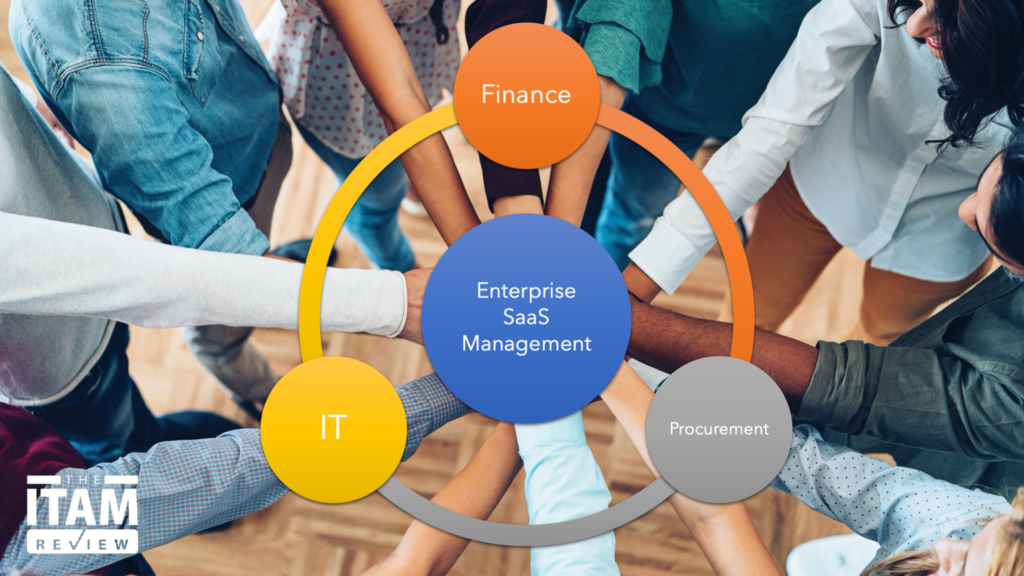Lead Business Change with Strategic SaaS Management
 In this article co-written by AJ Witt of The ITAM Review and Jasmina Zorko of Cleanshelf we discuss what IT Asset Managers should be doing now to help lead business change while managing cost and risk. Earlier this year we covered some immediate tactical steps to take control of costs as we faced the impact of COVID. As we look forward to 2021 and enter budget season for many organisations, now is the time to step up and take a more strategic approach to SaaS Management. By doing so we will enable our organisation to better plan for the long-term shift to remote working. But how do we do that? What should be our focus now? There are two key SaaS Management activities that need our attention.
In this article co-written by AJ Witt of The ITAM Review and Jasmina Zorko of Cleanshelf we discuss what IT Asset Managers should be doing now to help lead business change while managing cost and risk. Earlier this year we covered some immediate tactical steps to take control of costs as we faced the impact of COVID. As we look forward to 2021 and enter budget season for many organisations, now is the time to step up and take a more strategic approach to SaaS Management. By doing so we will enable our organisation to better plan for the long-term shift to remote working. But how do we do that? What should be our focus now? There are two key SaaS Management activities that need our attention.
Usage & Entitlement
First up, we still need to have great usage data. This year has seen software asset management’s horizon expand as everyone’s home has become an office location. This has driven a need for new SaaS solutions in addition to what was being used in centralised office settings. The devices our employees use have also changed. The rush to provision home-workers with the right equipment saw a rise in the use of personally owned laptops, Chromebooks, and mobile devices. These new device classes are harder to centrally manage, and without central management it’s harder to deploy and service traditional office applications.
However, we still need usage data to be able to manage our software estates. This is where agentless Enterprise SaaS Management tools deliver the goods. With no need to install a centrally-managed agent on devices that potentially aren’t owned by the company, or don’t support an agent, Enterprise SaaS Management tools gather rich usage data from discovery sources including publisher APIs and Single Sign On integrations with identity & access management vendors.
Alongside usage data, our tools also need to gather entitlement data. For SaaS applications this typically translates to “what we’re paying for”. This data is available from a wide variety of sources including publisher APIs, Finance Applications, and Contract Management apps. With Shadow IT continuing to be a significant proportion of SaaS spend we can find those entitlements with connections to expense management systems and bank and credit card/P-Card statements.
Strategic SaaS Management
With usage and entitlement insights at our fingertips we will likely discover that on average we’ll have 2-3 SaaS renewals to process every week. That’s quite a contrast to spending 18 months planning for a Microsoft Enterprise Agreement renewal. This is a problem because renewals are often a resource-intensive clerical task, like that performed by finance controllers processing invoices for payment. It certainly isn’t strategic, and the rapid cadence it runs at doesn’t give you time to be strategic. So how do you get out of the weeds and get strategic?
Strategic Contract Renewals
The key to strategic contract renewals is to look further ahead. Build a schedule of renewals due to take place 3 months/6 months/1 year from now. Even if you’re starting your Enterprise SaaS Management programme right now you can start building this schedule. All you need to know to do this is the following:
- When is the renewal due?
- How long is the renewal term?
- What is the contract value/number of seats?
Armed with those three pieces of information you can start to make smart decisions and start targeting renewals for further work. The obvious and correct place to start is contract size as that data is available without further analysis being required. Pick a large contract and then enrich your knowledge of it. Information required to make an informed, strategic contract renewal includes:
- Supplier Name
- Contract Value
- Term/Renewal Date
- How many users?
- Which departments/functions does it support?
- Who is the contract owner?
- Who is paying for it?
- What are we using it for?
- What is the usage trend?
- What is the application category?
- How critical is it to our operations?
This renewals knowledge enables you to get a multi-dimensional picture of your SaaS estate, benefitting multiple stakeholders. It enables you to approach those stakeholders with the insights they need to make better decisions. Rather than constantly reacting to the next renewal that’s due you’re now way ahead of the curve. You’ve calmed the frenetic renewals treadmill and still delivered those quick wins SaaS Management enables by optimising the right renewals at the right time.
Who are the key stakeholders who will benefit from insights provided by Enterprise SaaS Management? Let’s look at three in more detail – Procurement, Finance, and IT. For each of these stakeholders we cover what’s important to them, how to engage them, and the key Enterprise SaaS Management insights they need to do their jobs.
Procurement
Procurement aims to source the right tools at the best price on the best terms and so they need oversight of all contracts with a given publisher. They also need to know when those contracts are due for renewal and what the value is.
To engage Procurement you need to parcel up a set of renewals that have enough meat on the bone to make it worthwhile for them to invest time and resources in getting an improved deal. Time is critical – procurement processes take months, particularly if you’re looking to consolidate contracts on better terms. For that reason, you need to be alerting them to renewals that are a minimum of three months away. You may already have a minimum contract value for Procurement involvement but if not, they’ll soon tell you whether it’s worth the time and effort to cut a better deal.
You should also consider the needs of your publisher. You’re more likely to get a better deal the longer you give them to build it into their own sales forecasts.
Key SaaS Management Insights for Procurement: Contract Value, Number of Contracts, Renewal Date, Business Criticality
Finance
Finance’s job is to ensure the business gets the best value from its software investments. They need to be able to forecast spending for the mid to long term and understand when spending is switching from capital to operational expenditure. With budgets now often assigned at the departmental level, Finance also needs to know the SaaS application cost for each department. All this information is readily available from your Enterprise SaaS Management tool in general and your Renewals Calendar specifically. You should be providing this data to Finance at regular checkpoints – monthly and quarterly makes sense – along with proactively providing longer term trend data at budget time.
2020 undoubtedly saw budget shocks for many organisations, and those will continue as apps purchased in haste and perhaps without due diligence come up for renewal. It’s a critical moment for SaaS Management teams because there is a great opportunity on the table to provide Finance with accurate budget forecasts.
Key SaaS Management Insights for Finance: Contract Value, Quarterly/Annual spend forecasts, Spend Categories, Spend by Department
IT
IT’s role in SaaS Management is largely operational and focused on Service Management. Even for departmental IT, Service Desk will still be the first point of call. IT Ops teams need to provision SaaS Applications, onboard them into corporate single sign on solutions, and remove access for users who have left the business. Simplification and automation are key drivers for them. For this reason, knowing where there are overlapping contracts or solutions is important (for example, subscriptions for Zoom, WebEx, and GoToMeeting). Usage data is also important, not least for ensuring that any issues with corporate-wide solution adoption are noted early and addressed through better communication and training.
Key SaaS Management Insights for IT: Which applications and application categories are we using, what are we using it for, what are the alternatives
Other stakeholders
Depending on your organisation you may find value in engaging the following stakeholders:
- IT Architects – need to understand the current application landscape and where it’s going
- Security – need to understand the risk profile of applications, with particular focus on authentication and data storage
- Risk Management/Internal Audit – need to understand compliance of applications with legal and regulatory frameworks, including privacy
- HR – need to track employee satisfaction and how technology investments impact that
All these stakeholders will benefit from insights derived from your Enterprise SaaS Management solution.
Summary:
This article has outlined how to make Enterprise SaaS Management a strategic imperative. By focusing on renewal activity and broadening our time horizon we can get ahead of the day to day of SaaS Management and enable informed accurate strategic business decisions. Key stakeholders Finance, Procurement, and IT, working together, with insights provided by Enterprise SaaS Management, are enabled to drive out waste and maximise value from software investments.

With SaaS applications contributing so much to company culture & business value this is a powerful alliance for IT Asset Managers to nurture. Get it right and you’ll be a key contributor to strategic decision-making and a driver of business change.
Further reading
For more on Enterprise SaaS Management please see Cleanshelf’s whitepaper available here (registration required).
- Tags: budgeting · budgets · Change · COVID-19 and ITAM · Digital Transformation · Enterprise SaaS Management · ITAM strategy · SaaS
